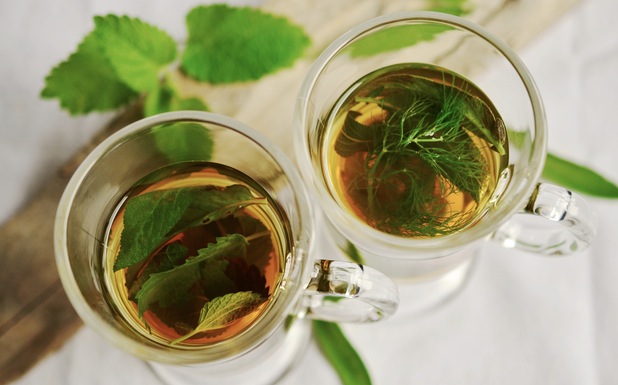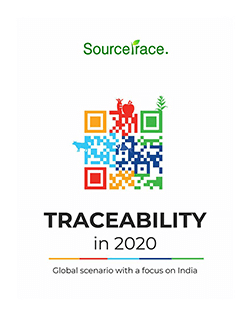Protecting Darjeeling Tea: the Tea from the Queen of the Hills

Today, tea has become an everyday beverage in India. It’s not only that more than eight in ten households in India drink tea, but that India is also the largest producer of tea in the world, producing nearly 30 per cent of the world’s tea. This has led to Indian tea companies having acquired several foreign enterprises, like the British brands Tetley and Typhoo. India was the top producer of tea for nearly a hundred years, and it is only of late that China has overtaken this position because of its larger available land for tea cultivation. Yet, Indian tea is unique because certain varieties are grown only in India, such as Assam tea, Nilgiri tea and Darjeeling tea. Of these, Darjeeling tea has a lightness of flavor and a fine colouring that distinguishes it from the others – because of which it is loved and patronized by tea connoisseurs across the world.
History of Darjeeling tea
The story of Darjeeling tea began as long back as the 1830’s, when a young British officer, Captain Lloyd, saw the possibility of converting Darjeeling, a small town in the north of West Bengal, set in the back-drop of the snow-clad Himalayas, into a hill station. At that time it was inhabited by the Lepcha tribes. Later on, Darjeeling passed into the charge of a civil surgeon, who set up the first tea nursery with seeds of the China variety of tea from Kumaon hills in northern India. The success of this tea nursery prompted the British to set up tea gardens. Today there are 87 such tea estates spread across 17,800 hectares, employing more than a lakh workers (of which more than half are women), producing approximately 8-9 million Kg of tea a year. Darjeeling Tea gets its distinct flavour from a unique and complex combination of agro-climatic conditions; and not surprisingly, 70 per cent of it is exported. And when a product earns such a reputation in the global market, it is natural for imitations to appear, riding on the brand name of ‘Darjeeling’. These adulterated or cheaper quality teas began hampering the fame of Darjeeling tea. And so, Darjeeling tea needed protection.
Protection for darjeeling tea
Consequently, it was the Tea Board that was vested with the responsibility of acquiring ‘protection’ for Darjeeling Tea, in the form of ‘Geographical Indication’ under Intellectual Property Rights. The Tea Board of India is a non-profit body set up by the Government of India, which administers all tea growing areas of India, though it is not involved in the production of tea. Rather, it is entrusted with the task of regulating the cultivation and production of Indian tea, to improve its quality and to improve its market globally. The Tea Board is also responsible to secure better working conditions and incentives for workers, while also regulating the total area of land under cultivation.
What does Geographical Indication mean, and how can it ‘protect’ Darjeeling tea?
A geographical Indication (GI) acts as a mechanism by which producers can differentiate their products from competitors, build a reputation and brand around their products so that it fetches the premium price it deserves. Such a protection was much needed for Darjeeling tea, as tea produced in countries like Kenya, Sri Lanka, and even Nepal has, in the past, been passed off as ‘Darjeeling tea’ in the global market. The process of obtaining this protection for Darjeeling tea began in 1983, by creation of the logo as a certification trademark. At that time, it had few precedents to follow. In October 2004, Darjeeling Tea was granted GI status and it was holds a place or pride as the first application to be registered in India as GI. The logo shows the word ‘DARJEELING’ and a depiction of an Indian woman holding tea leaves, all in a roundel. This logo has been used extensively by all producers of Darjeeling tea, under the Tea Board’s license and authority.
Darjeeling Tea Board:
To ensure that all Darjeeling supplied across the domestic and global market is authentic, the Government has made it compulsory to certify its authenticity. This makes it mandatory for all the dealers in Darjeeling tea to enter into a license agreement with the Tea Board of India and pay an annual license fee. This way, the Tea Board is able to calculate and compile the total volume of Darjeeling tea produced and sold in a particular period. All customs checkpoints have also been instructed not to allow consignments to be exported without the accompanying certificate.
Now that protection has been obtained and certification through the logo achieved, the Tea Board hired a World Wide Watch agency called Compumark, whose job is to monitor and report to the Tea Board, cases of unauthorized use and any other attempt to register other products under the brand name ‘Darjeeling’. This is how the Tea Board further protects this protection by trying to prevent the misuse of this brand name, as many came to its notice. For example a company called ‘Bulgari’ from Switzerland agreed to withdraw its application to use the tag ‘Darjeeling Tea fragrance for men’. Several such cases were settled through negotiations. The acquiring of this GI did have a positive fall-out. It fetches a premium price and the benefits do percolate to the workers. Because of the protection, Darjeeling tea was able to maintain a stable curve even when the tea sector at large passed through a low phase. It also brought about consolidation of ownership and new investments in the Darjeeling tea.
As a concept, Geographical Indication is yet to mature in India, but a study carried out by UNCTAD (United Nations Conference on Trade and Development) found that GI registered agricultural products do fetch a price premium of 10-15 percent. In the global market, products such as tea and others still do not enjoy the protection that is provided to wines and spirits through TRIPS (Trade Related Intellectual Property Rights); such as example, Scotch Whisky, which is protected by an Act. But with consumer awareness and Government initiatives, it’s getting there. Darjeeling tea could become the finest example of that, as it is of colour, taste and aroma.
SourceTrace's software solutions have been deployed across 37 countries and 4 continents already. We are on a mission to make agriculture and food systems more sustainable. Get in touch and we will extend our expertise and commitment to you.
Request a Demo


